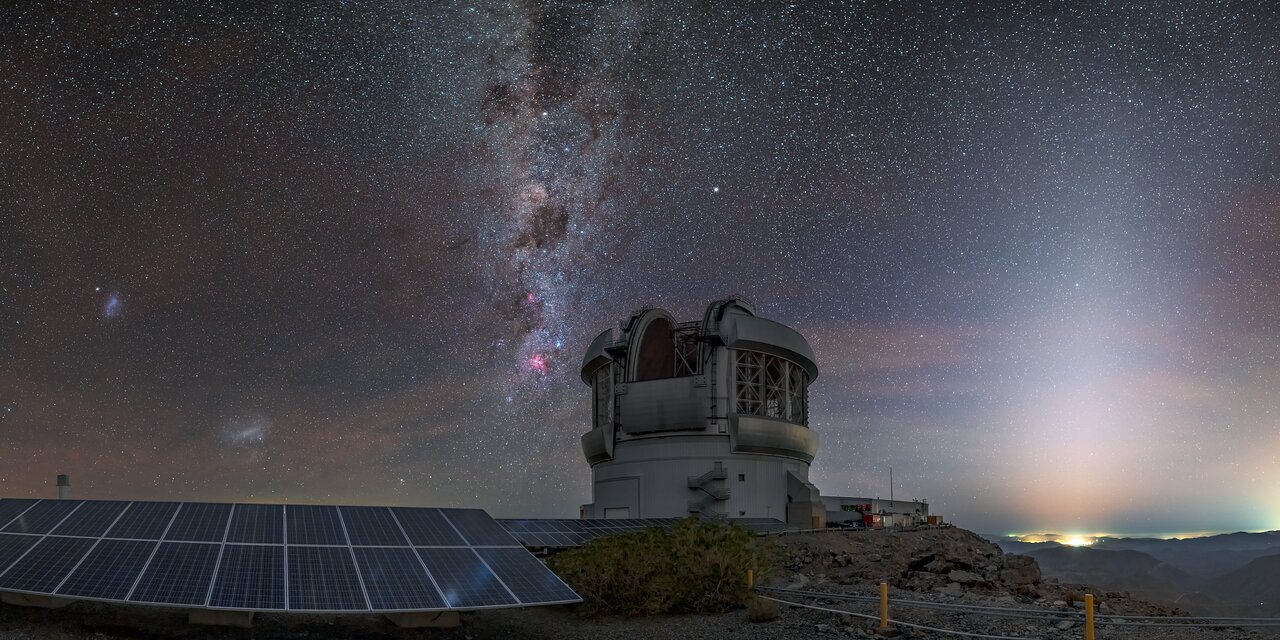Gemini South telescope
The International Gemini Observatory consists of twin 8.1-meter diameter optical/infrared telescopes located on two of the best observing sites on the planet. The Gemini South telescope is located on a mountain in the Chilean Andes called Cerro Pachón, where very dry air and negligible cloud cover make this another prime telescope location. Both of the Gemini telescopes have been designed to excel in a wide variety of optical and infrared capabilities. By incorporating technologies such as laser guide star adaptive optics and multi-object spectroscopy, astronomers in the Gemini partnership explore the universe in unprecedented depth and detail. The Gemini Observatory’s international headquarters is located in Hilo, Hawai‘i at the University of Hawaii Hilo's University Park.
Gemini’s twin telescopes are optimized for observing in the mid-infrared with silver-coated mirrors, an extremely light structure for the secondary, and a light baffle (used when observing in the optical) which can be closed for observing in the infrared. The mirrors are f/1.8, 8.1 m diameter, 20 cm thick meniscus, and weighs 22,200 kg. Each was made from 55 blocks of low expansion (ULE-581) glass fused together at 1700 degrees C and slumped at Corning's Canton, New York facility. Each mirror blank was then shipped to REOSC Optique in Paris, France, for polishing of its reflecting surface to that of a concave hyperboloid. The measured surface accuracy is 15.6 nm (rms).
The Gemini telescopes have a suite of 4 optical and infrared, imagers and spectrographs, mounted on the back of the telescopes at the same time (as well as the acquisition and guidance instruments). This means that switching from one instrument to another takes a matter of minutes to complete before being capable of taking data on the next science target.
Gemini is also unique among other 8-10 meter class observatories in that the telescopes can be operated fully remotely from our base facilities.
Travel information for Gemini South is available here.
For scientists: More details can be found on the science pages.
Gemini South telescope
|
Please help us to complete this page by emailing information and corrections to info@noirlab.edu.







